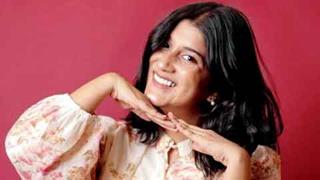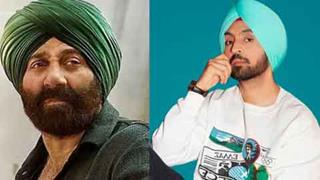When I had screened my film Parzania, one of the Kashmiri students at Anahad, an NGO in Delhi, stated that in Kashmir, all of them were living in a beautiful prison. His statement triggered the idea of making a film on Kashmir because it was an intriguing idea.
What is Lamhaa all about?
Lamhaa is a moment of uncertainty, which exists in every Kashmiri's life today. It is that moment when a simple homely boy can become a suicide bomber. It is that moment when a soldier can be shot by a Lashkar bullet and there is a wafer thin line between a militant and a freedom fighter.
My film Lamhaa is made up of many such tender moments faced by the normal Kashmiri, day to day for the last 18 years.
Lamhaa is more about today than the history of Kashmir. To make it engrossing and appealing to the larger audience, I have incorporated a fictional plot in Lamhaa.
Is Lamhaa a pro or an anti Kashmir film?
The subject is about how Vikram played by Sanjay Dutt, a Military Intelligence Officer is brought back to the valley to uncover a plot. During his journey, Vikram comes across a lot of situations which the common Kashmiri is battling today.
It is neither a pro nor anti Kashmir film. It is a very balanced film which while putting up a view point of the Kashmiri today strongly, also sets out to tell that today the Kashmiri is also divided, because one set wants peace and progress, represented by Kunal Kapoor, the other, represented by the separatist leader played by Anupam Kher, wants freedom at any cost.
Bipasha Basu plays a Kashmiri girl called Azeeza, who is battling both her internal and external conflicts. Though initially, Azeeza works for the separatist leader, gradually she understands the larger picture during the course of the film.
 Why did you not play safe and shoot your film in safer locations in Kashmir like Pahalgam or Gulmarg?
Why did you not play safe and shoot your film in safer locations in Kashmir like Pahalgam or Gulmarg?I wrote the script of Lamhaa during my various visits to Kashmir. It was extremely difficult to shoot the film in Kashmir.
The first time when we went to shoot there, there was no government in place and it was either the President's or the Governor's rule in Kashmir and hence there was absolutely no support system for us.
It would have been very easy to shoot in Gulmarg or Pahalgam but I wanted to shoot in downtown Srinagar, because besides the fact that the script was written keeping in mind the locations in Srinagar, I needed an environment of the city when all these things happen. Hence I chose to shoot near Jama Masjid where a curfew has now been imposed.
How did you zero in on Sanjay Dutt to play the role of the middle -aged Vikram in Lamhaa?
I did not want to cast Naseeruddin Shah in the role that I had ear marked for Sanjay Dutt because I did not want to make another Parzania. When my E.P., Rubina met producer Bunty Walia, he liked the idea of the subject of Lamhaa and suggested that I cast Sanjay Dutt in the film.
I decided to cast Sanjay because I needed a mature actor, not a Ranbir Kapoor type. It was not at all difficult to convince Sanjay Dutt, because once he heard the basic idea in ten minutes, he was game to fly down to shoot in Srinagar and started talking about Kashmir and sharing stories about the valley and also cried about the deterioration of Dal Lake over the years.
 Initially we had sets in plan at Film City in Goregaon, but since we could not get people who looked like Kashmiris, we dropped the idea. I also went to Manali but could not replicate Kashmir. When producer Bunty Walia managed to get the locations free in Srinagar, Sanjay was brave enough to come forward to shoot for the film in Srinagar.
Initially we had sets in plan at Film City in Goregaon, but since we could not get people who looked like Kashmiris, we dropped the idea. I also went to Manali but could not replicate Kashmir. When producer Bunty Walia managed to get the locations free in Srinagar, Sanjay was brave enough to come forward to shoot for the film in Srinagar.Karisma Kapoor and not Bipasha Basu was your first choice for Lamhaa!
Kehta Hai Dil Baar Baar was my first film as a director. Since Bipasha Basu for some reasons could not do that film for me, I got Kim Sharma to play the lead opposite Jimmy Shergill in the film.
For Lamhaa, let me confess that it was Karisma Kapoor who I had approached first but though she was willing to act in the film, she was scared and hence did not want to come to the valley to shoot for the film.
By then I realized that the character of Azeeza needed an actress who is athletic and on the edge and also willing to give me time for the project. Bipasha fitted the bill. Bipasha agreed to be part of the project because besides the fact that she knew me, she had also acted with Sanjay Dutt earlier in three films including Rudraksh.
Tell me about your next film after Lamhaa- Society Kaam Se Gayee!
After Lamhaa, I wanted to make stress free, light and quick film. Can you believe it, though? Lamhaa is seeing the light of the day only now after I have already completed my next film. It is a relatively simple film like Society Kaam Se Gayee.
It was earlier titled Society but sounded too intellectual for my liking. It is about the water problem faced by the housing societies in a city like Mumbai. It is a satire which is an amalgamation of really weird characters.
 How would you evaluate your growth as a filmmaker from Kehta Hai Dil Baar Baar to Society Kaam Se Gayee?
How would you evaluate your growth as a filmmaker from Kehta Hai Dil Baar Baar to Society Kaam Se Gayee?I made Kehta Hai Dil Baar Baar in 1998, started Parzania way back in 2002 and now my Lamhaa is being released in 2010. It has been a journey of twelve years as far as I am concerned, as a director. I am happy with my journey, because I have made at least two good films.
People are taking me a little more seriously after Parzania and Lamhaa. I feel that with every film your responses increase.
When you make your first film, you do not lose anything, because you have not gained anything. You get a better perspective as you get older.
What next, after Society Kaam Se Gayee?
I am now working on a script for Ravi Chopra. It will be an intense court room drama. I have been working on the subject for over a year. I am also working on another subject for a political action film.
















